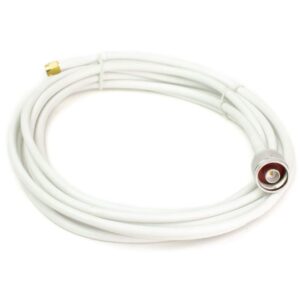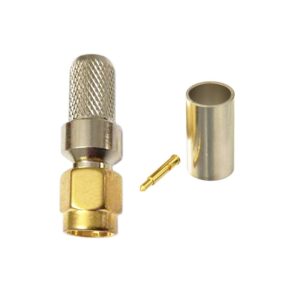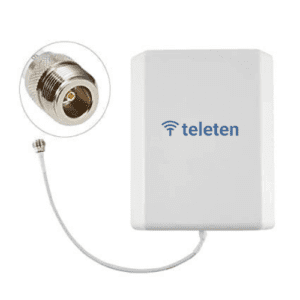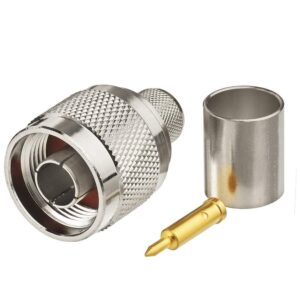Specifications:
- Connector Types:
- DIN Female:
- Connector Type: DIN (Deutsches Institut für Normung)
- Gender: Female (with a central socket and surrounding shield)
- DIN Female:
- Frequency Range:
- Up to 7.5 GHz: The adapter is suitable for applications requiring performance up to this frequency. It ensures reliable signal transmission and minimal signal loss within this range.
- Impedance:
- Typically 50 Ohms:
- DIN Connectors: Often 50 ohms for RF applications. It’s important to ensure that the impedance of the adapter matches your equipment to prevent signal reflection and loss.
- Typically 50 Ohms:
- Mechanical Construction:
- Material: Usually made from durable metals such as brass or stainless steel, often with gold or nickel plating to enhance conductivity and resist corrosion.
- Design: Designed to provide a secure and reliable connection between two DIN Female connectors, maintaining signal integrity and performance.
- Applications:
- RF Testing: Useful for connecting RF equipment with DIN connectors in test setups.
- Communication Systems: Bridging connections between devices or cables with DIN connectors.
- Microwave Systems: Connecting components in systems that operate at higher frequencies.
- General RF Applications: Where a transition or extension between DIN connectors is needed.
- Typical Features:
- Low Signal Loss: Designed to minimize signal degradation and ensure efficient signal transfer between connectors.
- Durability: Built to withstand frequent connections and disconnections, ensuring long-lasting performance.
Usage Tips:
- Verify Impedance Matching: Ensure that the impedance of the adapter (typically 50 ohms) matches that of your equipment to avoid signal reflection and loss.
- Check Frequency Range: Confirm that the adapter’s frequency range (up to 7.5 GHz) meets the requirements of your application. For applications beyond 7.5 GHz, consider an adapter with a higher frequency rating.
- Ensure Secure Connections: Properly connect the DIN Male plugs into the DIN Female sockets to avoid loose connections, which can cause signal issues.
- Inspect Regularly: Periodically check the adapter for any signs of wear or damage to ensure continued optimal performance.
This DIN Female to DIN Female adapter is ideal for applications where you need to connect or extend DIN connectors, especially in RF testing, communication systems, and microwave systems requiring high-frequency performance.






